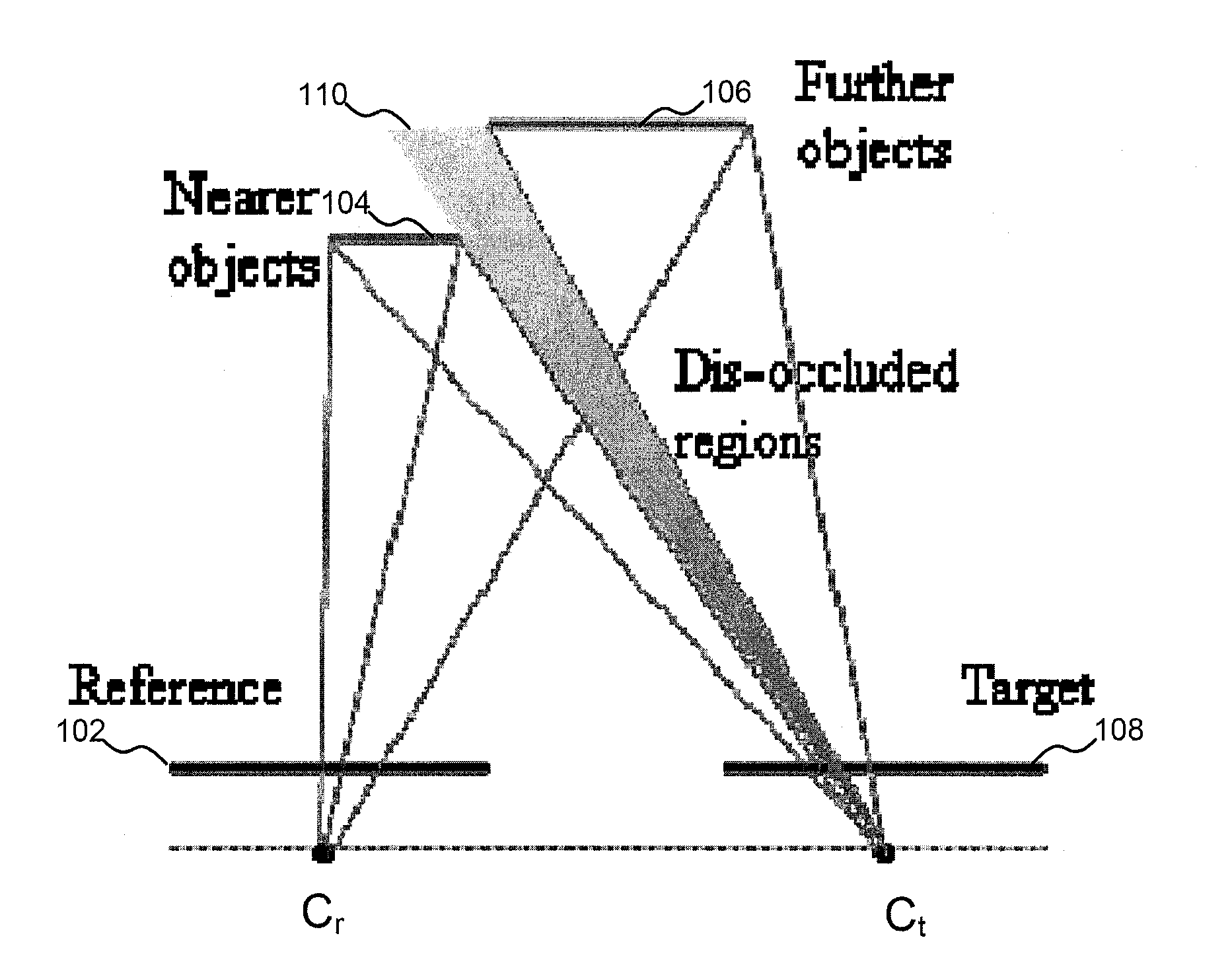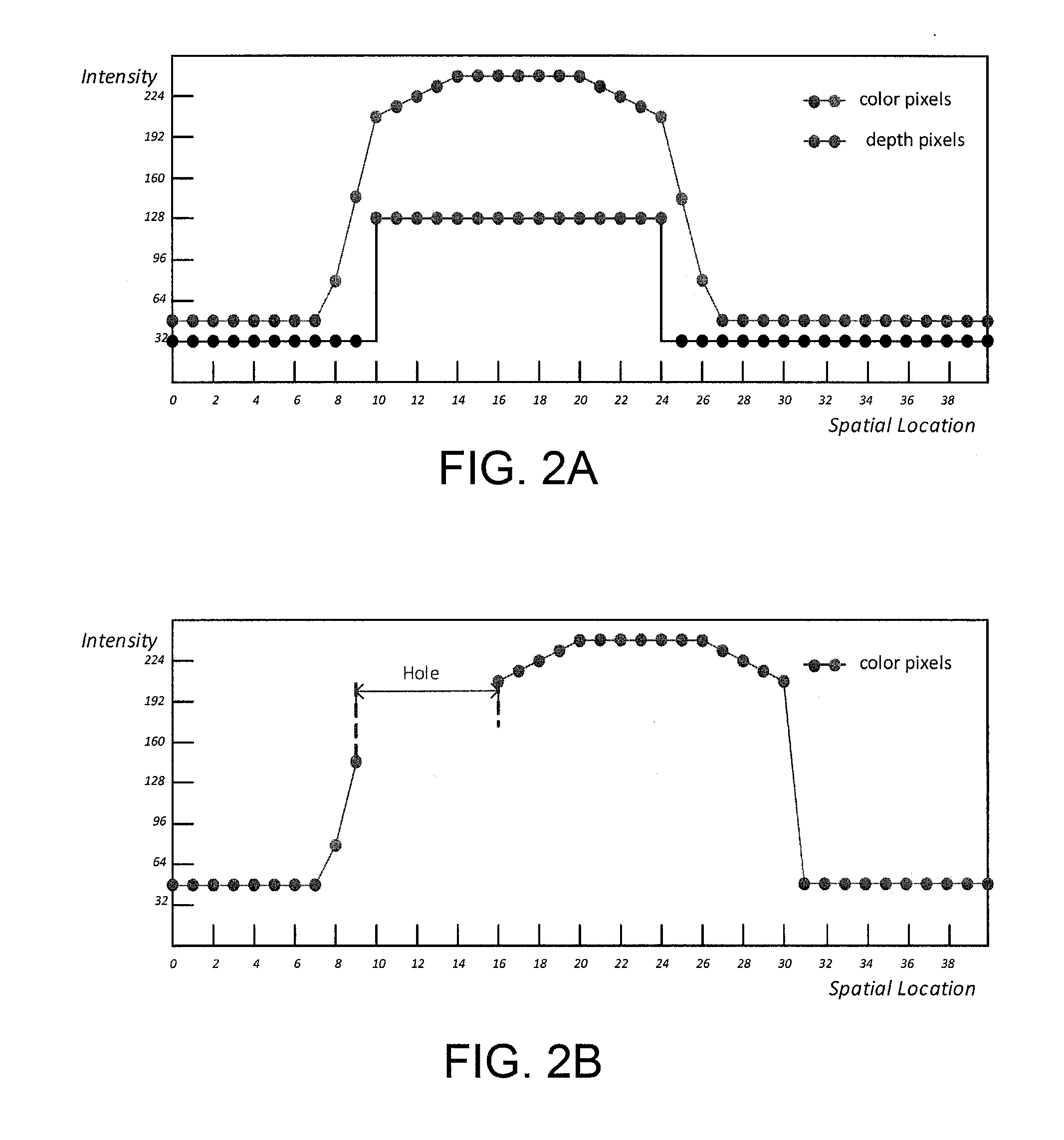Apparatus, system and method for foreground biased depth map refinement method for dibr view synthesis
a technology of depth map and depth map, applied in the field of image processing, can solve the problems of artifacts or unwanted degredation of images, insufficient information in 2d image alone, and insufficient information in typical depth maps to fill disoccluded regions, so as to avoid incorrect use of foreground texture information and improve the quality of synthesized views
- Summary
- Abstract
- Description
- Claims
- Application Information
AI Technical Summary
Benefits of technology
Problems solved by technology
Method used
Image
Examples
Embodiment Construction
[0031]Characteristics of depth map and natural color image have many differences. Depth map represents distance between an object and a camera as a gray that has large homogeneous regions within scene objects and sudden changes of depth values at object boundaries. Thus, the edges of depth map are typically very sharp. However, most of the edges in color image are changing smoothly over a transition region. To illustrate these differences, FIG. 2A shows color pixel intensive values and depth pixel values of a horizontal line in a color image. There are two smooth edges of an object with sharp depth edges in the corresponding depth map. In the case of FIG. 2A, these two depth object boundaries are aligned at the middle of the transitional color edges. However, depth map that captured by depth camera or estimated from video frames may not aligned correctly. These depth edges may be misaligned at the foreground regions or background regions as shown in FIG. 3A and FIG. 3B, respectively...
PUM
 Login to View More
Login to View More Abstract
Description
Claims
Application Information
 Login to View More
Login to View More - R&D
- Intellectual Property
- Life Sciences
- Materials
- Tech Scout
- Unparalleled Data Quality
- Higher Quality Content
- 60% Fewer Hallucinations
Browse by: Latest US Patents, China's latest patents, Technical Efficacy Thesaurus, Application Domain, Technology Topic, Popular Technical Reports.
© 2025 PatSnap. All rights reserved.Legal|Privacy policy|Modern Slavery Act Transparency Statement|Sitemap|About US| Contact US: help@patsnap.com



